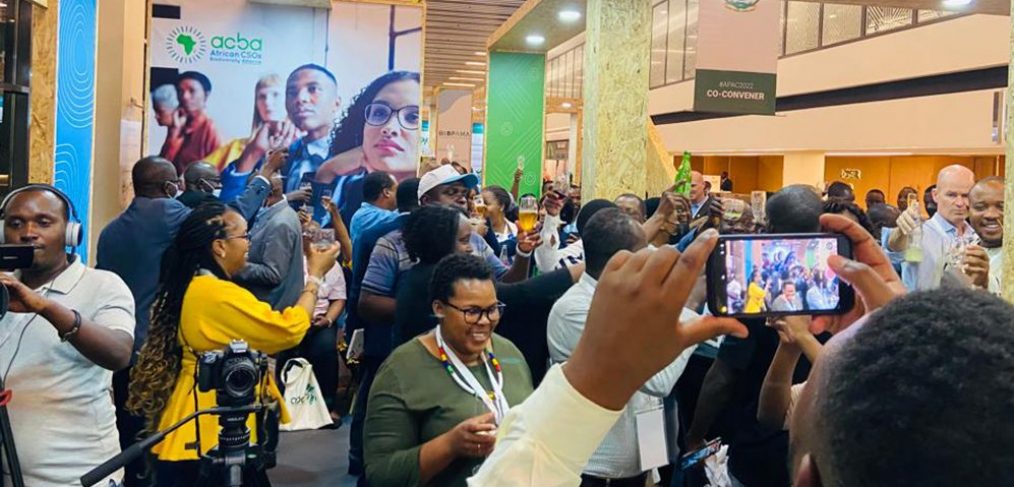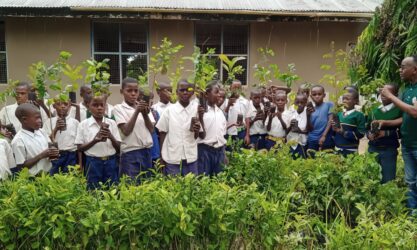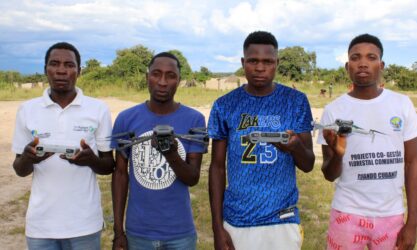
Reflections from the African Protected Areas Congress
Twenty-nine delegates from the Community Leaders Network of Southern Africa (CLN) attended the first African Protected Areas Congress (APAC) held in Kigali, Rwanda in July 2022. Eight of these delegates attended the two-day pre-congress for Indigenous People and Local Communities (IPLCs) and one attended the Youth pre-congress.
During the main congress, we hosted five side-events and were invited as moderators or panellists for seven other side-events, besides taking many opportunities to network and discuss conservation with our African colleagues and supporters. These are some of our key reflections and takeaways from the seven intense days that will hopefully chart the way forward for African conservation.
1. Indigenous People and Local Communities must be involved in conservation
The history of conservation in Africa involves dispossessing people from their traditional lands and preventing their use of natural resources in these areas. During the IPLC pre-congress, IPLCs who had been dispossessed in the past, and were still facing such threats today, called for restitution and justice. Those who are still living on their ancestral lands called for greater recognition of their role in conserving plants and animals by current African governments.
All present strongly agreed that community-led conservation provides a promising way forward for African conservation, where the needs and traditions of IPLCs are respected and integrated into all conservation efforts. Further, sustainable financing must be made available directly to community-based organisations to fulfil their potential for linking rural people with the global conservation agenda. With more capacity, these grassroots organisations can influence the global agenda and ensure that African people benefit from international agreements.
In a closing statement from IPLCs read by CLN’s Malidadi Langa from Malawi, the IPLCs made several key commitments to conserving biodiversity, limiting climate change, improving governance and ensuring that the sustainable use of flora and fauna is included in the Post-2020 Global Biodiversity Framework.
In return, they asked governments, donors, conservation organisations, media and academia to change their current approaches to IPLCs and conservation. The key changes required is to demilitarise conservation, ensure that Free, Prior and Informed Consent (FPIC) is obtained from affected communities for all conservation activities, to provide better funding pathways that uphold the rights of IPLCs and involve them in conservation, and to stop presenting Africa as a wilderness without people.
2. Communities across Africa need a united voice
Throughout the congress, our delegates found much common ground and shared similar experiences with colleagues from other parts of Africa. Our colleagues agreed that more could be done to improve relationships between protected areas and surrounding communities by reducing human-wildlife conflict and wildlife crime, while increasing the benefits derived from plants and animals through nature-based industries.
These common challenges and desired outcomes should provide the basis for a pan-African community conservation body that works with African governments and other key stakeholders to create workable solutions and drive positive change. Regional bodies such as CLN will continue to work with our own governments in Southern Africa, while feeding into broader pan-African strategies. We therefore look forward to joining hands with communities across the continent to drive the IPLC agenda between now and the next APAC.
3. Setting standards for Community-Based Natural Resource Management (CBNRM)
The Congress provided several opportunities for CLN to compare and contrast how CBNRM is implemented in different African countries, and to brainstorm ways to improve CBNRM in policy and practice. For CLN and our partner Resource Africa, this task starts with a regional monitoring and information project that will assist our communities to collect data on governance, livelihoods, and the environment that are useful for their own performance reviews. The system can also feed upwards to national and regional levels, where the performance of CBNRM can be measured over time and compared between countries with different policies.
Collecting and analysing such data at regional level will put CLN in the ideal position to define best practices for CBNRM in Southern Africa that could also be applied elsewhere on the continent. Reports produced by CLN on the status of CBNRM across Southern Africa can be used at multiple levels:
- Community-based organisations can consider new governance structures, benefit-sharing mechanisms or environmental monitoring practices based on practices in other countries;
- Governments that already have CBNRM programmes can consider policy changes to come in line with regional best practices;
- Governments that are still establishing CBNRM can start with tried-and-tested policies;
- Non-governmental organisations that support CBNRM can integrate best practices in their own work.
4. Preparation for future international conferences
As a relatively new network, our delegation learned more about the work needed to ensure that our voices are heard at international events, thus making APAC a kind of ‘trial run’ for our future engagements. APAC particularly useful for CLN to prepare for the coming Conferences of Parties for the UN Convention on Biological Diversity (CBD) and the Convention on the International Trade in Endangered Flora and Fauna (CITES) that are happening later this year.
The deliberations at APAC frequently referenced the CBD’s Post-2020 Global Biodiversity Framework (GBF), which will set out the international conservation agenda and key targets for 2030. The so-called 30 by 30 target was an especially hot topic during APAC, as this goal suggests that 30% of the earth and ocean should be protected by 2030.
The key issue for IPLCs regarding this target is what exactly is meant by “protected”. One of the clearest messages from APAC was that there should be no more forced evictions from land in order to create formally protected areas. If this target incorporated community conservation areas under the definition of “other effective area-based conservation measures” (OECMs, in GBF terminology), then the global target could be positive. If more global funding is channelled directly to community-based organisations that are recognised as the rightful stewards of OECMs, then the Post-2020 GBF could be a golden opportunity for funding community conservation in Africa.
The Kigali Call to Action is also useful for our CITES preparations, since regulated, legal international wildlife trade is a key part of sustainable use of biodiversity. Communities in Southern Africa that use international trade to fund community benefits and conservation efforts are especially interested in ensuring that CITES agreements do not block this source of income. We also support our governments in their endeavours to open the trade in high-value animal parts such as rhino horn or elephant ivory, provided that communities are fully included in this trade and can benefit from it.
Final thoughts
We hope that APAC is the first of many such Congresses, since it provided an important platform for Africans to discuss our conservation issues among ourselves. For many decades, and still to today, non-African countries and interest groups have dominated the African conservation scene. APAC is an opportunity to challenge the status quo by developing a truly African conservation agenda.
Another key message from APAC is that IPLCs must be seen as partners in conservation rather than victims or passive beneficiaries of externally driven conservation projects. In order to reach these goals, we must build on the outcomes of this Congress to create a pan-African IPLC network and actively engage with the rest of the world during key international events.


